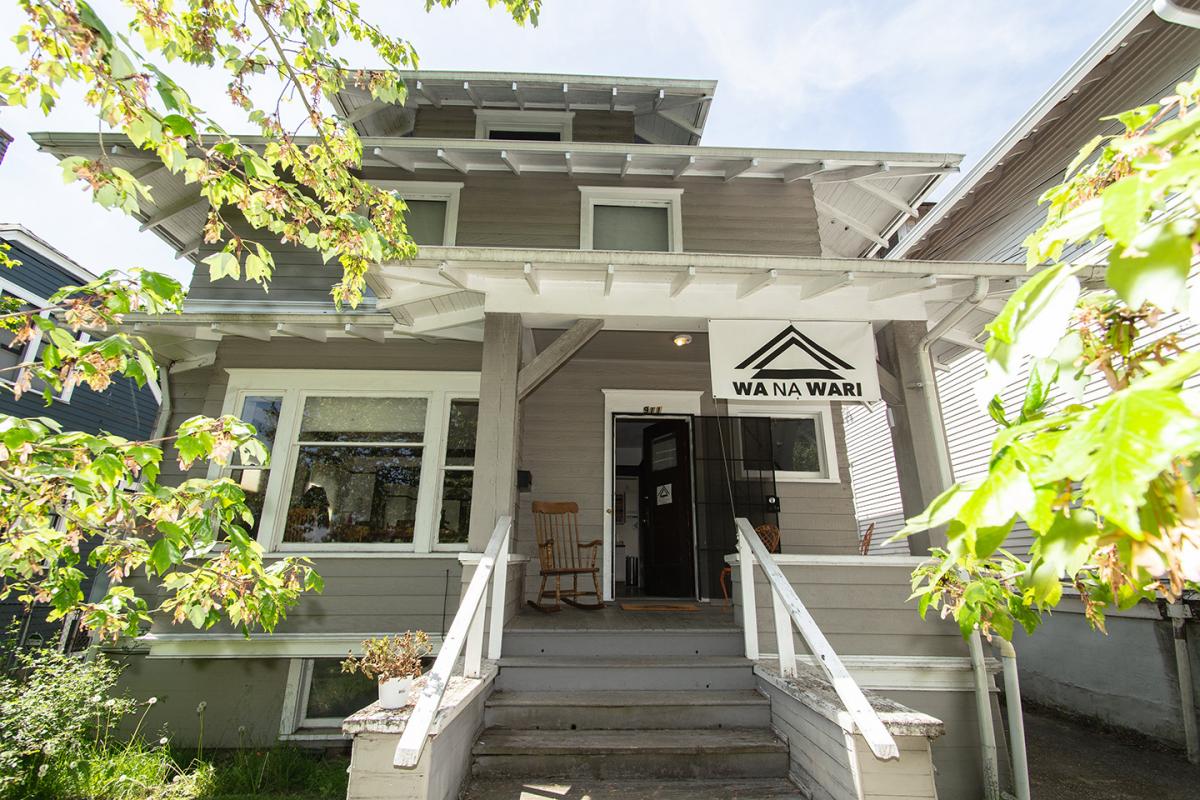Elisheba (Liz) Johnson is involved in a range of projects but in all of them, she draws on adrienne maree brown’s emergent strategies, which centers on taking small actions to create change on a larger scale. For example, she is one of the co-founders of Wa Na Wari, a Black arts space that holds a range of events from conversations with artists to performances. It also serves as an anti-displacement measure and gathering space.
“Art serves as a container for us to talk about social justice. You use the artwork as a tool to have these conversations or convene people and broaden our thinking,” Johnson said.
Johnson recalled a recent concert with visual artist, composer, and cellist Paul Rucker that was held in the space.
“Somebody going to a concert yesterday and seeing the importance of that, or how art can change their ideas about culture and community, is a way that I make change,” Johnson said. “I do a lot of work around belonging and making sure people feel like they have a place to belong.”
Johnson’s work centers on the idea of using art to build community. Currently, Johnson is also supporting a public art project with the Office of Arts & Culture. Typically, the Office does a call for artists and identifies someone who comes up with a concept. This time, Johnson worked directly with the Central District community to develop a public art piece that would honor the community’s history.
“Because of the displacement of this community, a lot of people tell Black people what they want,” Johnson said. “Why don’t we ask people what they want? We could talk about how gentrification has affected the community, but then they can tell us what they want this artwork to be.”
Taking a community-based approach to public art
The project took a community-based approach by distributing 70 surveys and interviewing 300 community members in the Central District. The crux of this project was creating space to listen to community members.
To understand what community members wanted, Johnson and her partner teams facilitated a brainstorming session with community members to understand people’s relationship with the Central District, and how they wanted to be represented. They asked the following questions:
- How can art deepen your relationship with the Central District?
- When I think of water, I think of _________.
- How can community stories serve the neighborhood?
“People wanted to honor the history of Black folks in the neighborhood, but they didn’t want it to feel like a memorial or something dead. They wanted something that was still alive and talked about the future,” Johnson said “A lot of [people said that] water is life [and] water is liberation. No matter where we are, we’re still connected to water.”
Johnson’s team ultimately choose Melvin Freeman, a Central District community member, as the artist for the public art project. His piece will be up on 23rd and Massachusetts by the end of 2019,
“The community didn’t want a memorial. They said, ‘we’re still here. We’re still part of this community,’” Johnson said.
In the midst of her work with the Office of Arts & Culture and Wa Na Wari’s work, there’s a bigger conversation about where artists could show their visual art.
“Another gallery emailed last week that they were closing. It’s really important to me that [Wa Na Wari] is a space to show Black art and ideas, just because there aren’t a lot of places like that in Seattle,” Johnson said. “My goal is to provide another platform for visual artists to show their work, but also to experiment and be creative.”
Seattle at large has developed wealth because of the profitable corporations that exist here, but this wealth does not always filter back into the community to support public art.
“Everything is catered to tech. All these apartment buildings are being torn down to build apartments,” Johnson said. “The new apartments are $3,000 so I can’t afford an apartment and I was born here.”
Creating space for artists to thrive
On an individual level, rising rent prices have made it more challenging for artists to live in the city or find places to share their work. This means that they often have to move further south or juggle multiple jobs.
“If you’re working multiple jobs, or a day job, that are really demanding of your time, you don’t have time to make music. It’s killing people’s space for creativity when they’re fighting so hard to just exist and pay for rent,” Johnson said. “People are [also] moving out of the city because they can’t afford it.”
One way that Johnson is creating opportunities for people in tech to engage with art is through her passion project, Collect. The idea is that she takes a group of people on art tours in museums, galleries, and art spaces like the Seattle Art Fair.
“The whole idea is just to get people comfortable about art because we found that a lot of people are intimidated, even to go to the [free] first Thursday [at participating museums],” Johnson said.
When asked to envision the community where she’d want to live, she imagined living in a city where she can create and share art with others.
“You build community by going to the neighborhood coffee shop or a place in your community, you can hear live music,” Johnson said. “That’s how the Central District was. People were able to do all their extracurricular activities and shop in their community. I want to live in a community like that, wherever that is.”
In the midst of change, Johnson hopes that community members will continue to move together
“I envision that there are lots of people in community organizing for black and brown folks to have property. I envision the expansion of that, like the Liberty Bank Building, Africatown’s building in Midtown Center,” Johnson said.
